
Hong Kong, officially the Hong Kong Special Administrative Region of the People's Republic of China (HKSAR), is a metropolitan area and special administrative region of the People's Republic of China on the eastern Pearl River Delta of the South China Sea. With over 7.5 million residents of various nationalities in a 1,104-square-kilometre (426 sq mi) territory, Hong Kong is one of the most densely populated places in the world.

Tsing Ma Bridge is a bridge in Hong Kong. It is the world's 14th-longest span suspension bridge, and was the second longest at time of completion. The bridge was named after the two islands it connects, namely Tsing Yi and Ma Wan. It has two decks and carries both road and rail traffic, which also makes it the largest suspension bridge of this type. The bridge has a main span of 1,377 metres (4,518 ft) and a height of 206 metres (676 ft). The span is the longest of all bridges in the world carrying rail traffic.

Kai Tak Airport was the international airport of Hong Kong from 1925 until 1998. Officially known as Hong Kong International Airport from 1954 to 6 July 1998, it is often referred to as Hong Kong International Airport, Kai Tak, or simply Kai Tak and Kai Tak International Airport, to distinguish it from its successor, which may be referred to as Chek Lap Kok International Airport, built on reclaimed and levelled land around the islands of Chek Lap Kok and Lam Chau, 30 kilometres (19 mi) to the west.

The Hong Kong–Zhuhai–Macau Bridge (HZMB) is a 55-kilometre (34 mi) bridge–tunnel system consisting of a series of three cable-stayed bridges, an undersea tunnel, and four artificial islands. It is both the longest sea crossing and the longest open-sea fixed link in the world. The HZMB spans the Lingding and Jiuzhou channels, connecting Hong Kong, Macau, and Zhuhai—three major cities on the Pearl River Delta.
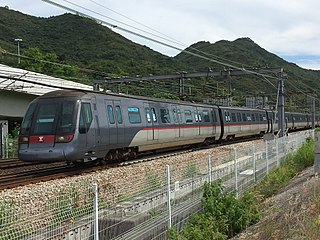
The Tung Chung line is one of the eleven rapid transit lines of the MTR system in Hong Kong, linking the town of Tung Chung with central Hong Kong. A part of the Tung Chung line was built along with the Kap Shui Mun Bridge and the Tsing Ma Bridge. The line currently travels through eight stations in 27 minutes along its route. The line is coloured orange on the map.
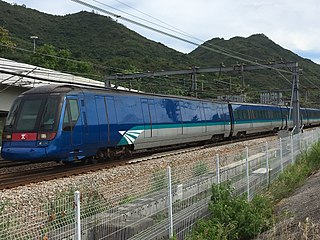
The Airport Express is one of the lines of the Hong Kong MTR system. It links the principal urban areas with the Hong Kong International Airport and the AsiaWorld–Expo exhibition and convention centre.

Tsing Yi South Bridge, opened as the Tsing Yi Bridge on 28 February 1974, was the first bridge to Tsing Yi, Hong Kong. It spans Rambler Channel, linking Tsing Yi Island to the former Pillar Island, Kwai Chung. The bridge spans 610 metres and is 26 metres (85 feet) high. It contributed significantly to the development of Tsing Yi, particularly in the 1970s and 1980s. The name "Tsing Yi South Bridge" was adopted following the 1987 opening of the second bridge to Tsing Yi, the Tsing Yi North Bridge.

The AsiaWorld–Expo is one of the two major convention and exhibition facilities in Hong Kong along with Hong Kong Convention and Exhibition Centre. It was opened on 21 December 2005 by Donald Tsang, the second Chief Executive of Hong Kong, and it is operated by AsiaWorld–Expo Management Limited. It is located on Chek Lap Kok island, next to the Hong Kong International Airport.
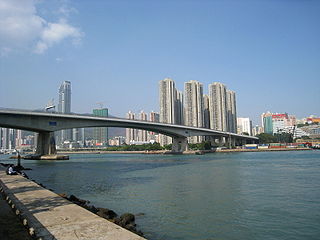
Tsing Yi North Bridge, also called Tsing Tsuen Bridge (青荃橋), connects the Tam Kon Shan Interchange on Tsing Yi Island to the Tsing Tsuen Interchange in Tsuen Wan, spanning the Rambler Channel. Inaugurated on 10 December 1987, the bridge was designed to improve access to Tsing Yi, which at that time was connected to Kwai Chung by only one fixed link, the heavily congested Tsing Yi Bridge.
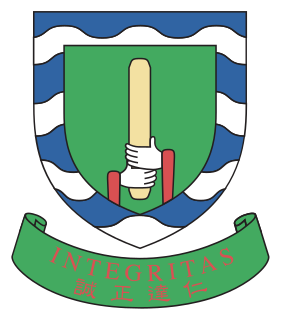
Tsuen Wan Government Secondary School is an English-language (EMI) co-education secondary school located at 70 Hoi Pa Street, Tsuen Wan, Hong Kong. The school building consists of the hall, the laboratory wing, the classroom wing, and the new wing. Ms. Tang Suk Ching is the current principal of the school, beginning her term in September 2016.

Aberdeen Tunnel, part of Route 1, is a two-tube tunnel linking Happy Valley and Wong Chuk Hang near Aberdeen on the Hong Kong Island, Hong Kong. It shortens the travel time between Wong Chuk Hang and Causeway Bay of the Hong Kong Island. It connects the Wong Chuk Hang Road and Canal Road Flyover in the Hong Kong Island. The toll plaza is at the Wong Chuk Hang end.
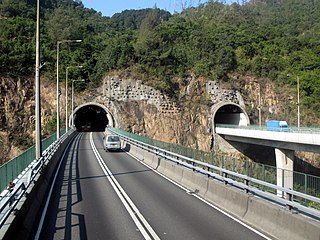
The Shing Mun Tunnels are a system of tunnels and viaducts in the New Territories, Hong Kong connecting the new towns of Tsuen Wan to the west and Sha Tin to the east. They are a part of Route 9 and the Tsuen Wan entrance is the reset point of Route 9.
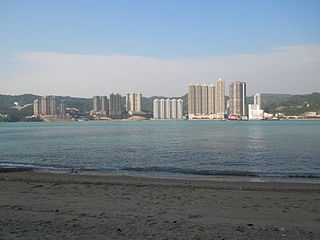
Sham Tseng is a coastal area in Tsuen Wan District, Hong Kong, between Ting Kau and Tsing Lung Tau.

Kwai Tsing Container Terminals is the main port facilities in the reclamation along Rambler Channel between Kwai Chung and Tsing Yi Island, Hong Kong. It evolved from four berths of Kwai Chung Container Port completed in the 1970s. It later expanded with two berths in the 1980s. Two additional terminals are added adjoining to Stonecutters Island in the 1990s and was renamed Kwai Chung Container Terminals. In the 2000s, when Container Terminal 9 on the Tsing Yi Island and was renamed to Kwai Tsing Container Terminals.

North Lantau Highway is an expressway forming part of Hong Kong's Route 8, linking Hong Kong International Airport and Lantau Island with the rest of the territory. The road has three lanes in each direction for its entire length with full-width hard shoulders for emergencies and breakdowns. The speed limit is 110 kilometres per hour (68 mph) for most of its length, the highest of any road in Hong Kong.

Sha Tin Park, formerly known as Sha Tin Central Park, is a park at 2 Yuen Wo Road, Sha Tin, Hong Kong. It is situated along the Shing Mun River in the new town of Sha Tin, next to the New Town Plaza, Sha Tin Town Hall, and Sha Tin Public Library.

The Airport Core Programme Exhibition Centre is housed in a single-storey distinctive white structure situated at 401 Castle Peak Road, Ting Kau, New Territories in Hong Kong. The exhibition centre is run by the Home Affairs Department for the Airport Core Programme, often referred to as the Rose Garden Project.

Public swimming pools in Hong Kong are managed by the Leisure and Cultural Services Department (LCSD). There are 44 public swimming pools in Hong Kong; 9 in Hong Kong Island, 13 in Kowloon, and 22 in the New Territories. LCSD manages public swimming pools according to Law of Hong Kong Chapter 132 sections 42 to 45.
Aoki Corporation was a Japanese construction company founded in 1947. It built many projects in Japan, Hong Kong, and Taiwan, and also invested in non-construction businesses, like hotels. It previously owned the Westin Hotels chain. The company, considered one of Japan's mid-tier zenekon by the 1990s, went bankrupt in 2001 and merged with Asunaro Construction in 2004.

The Tuen Mun–Chek Lap Kok Link is a road project in the New Territories, Hong Kong. It comprises two elements: the "Northern Connection" and the "Southern Connection". The Northern Connection comprises an undersea tunnel crossing the Urmston Road, linking Tuen Mun to the "Boundary Crossing Facilities" (BCF), an artificial peninsula connected to Hong Kong International Airport. The Southern Connection, officially named Shun Long Road, comprises viaducts linking the BCF to North Lantau Highway on Lantau Island.




















